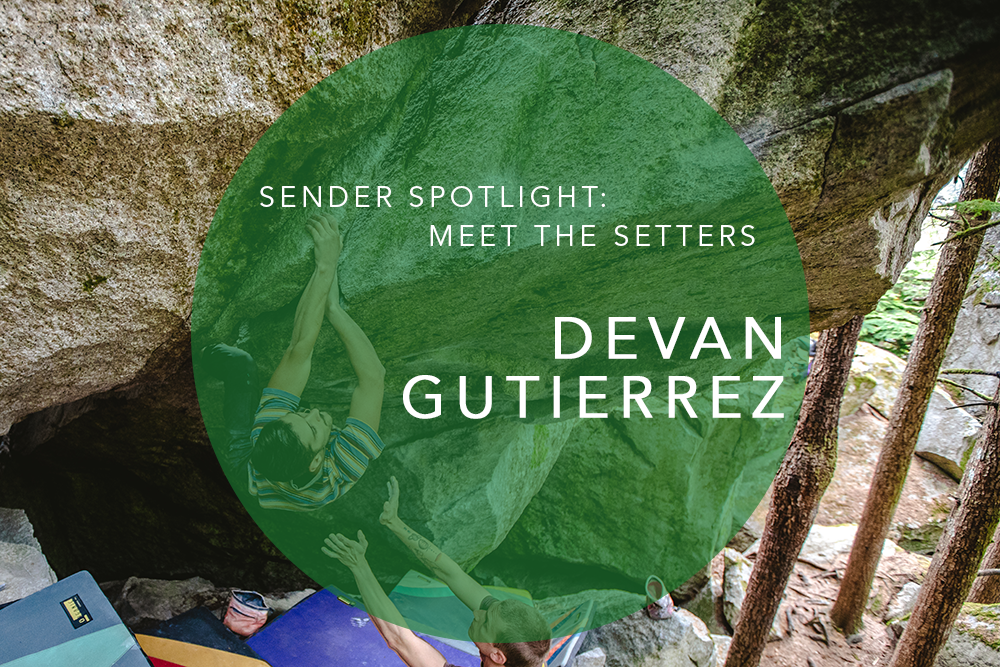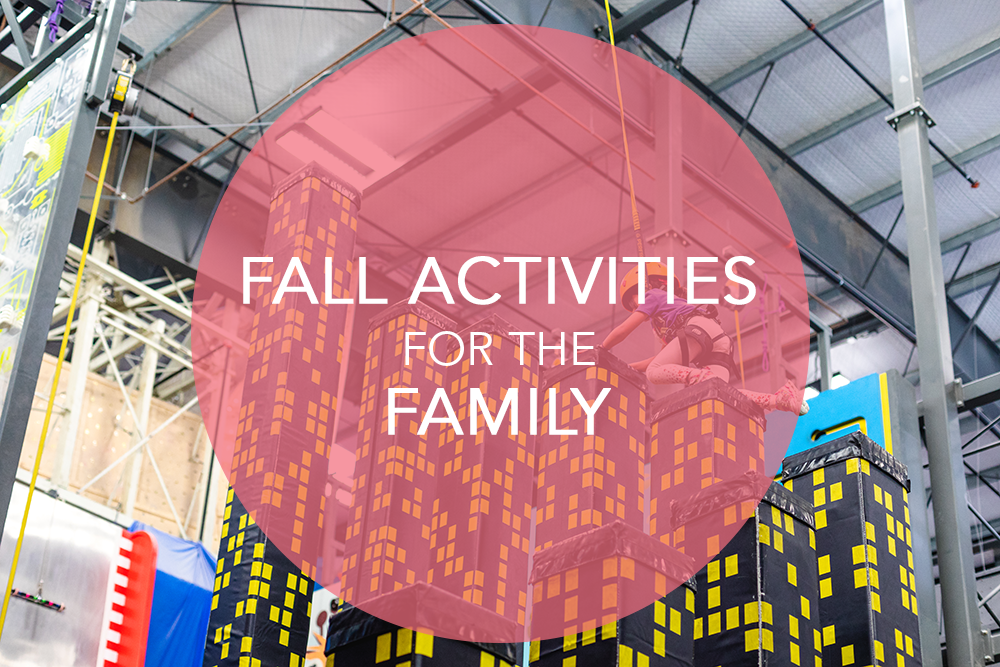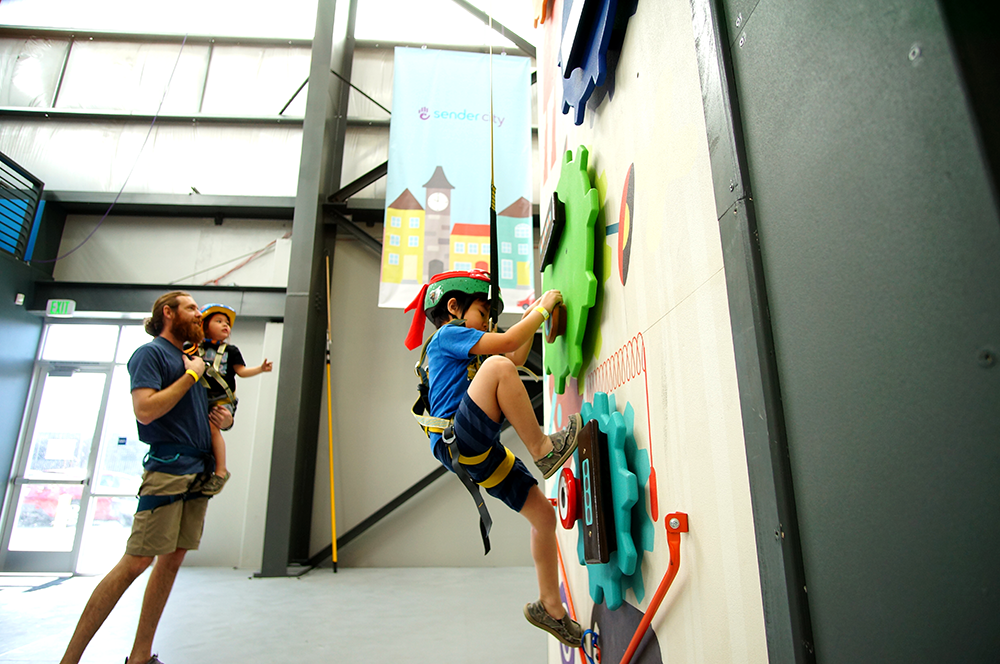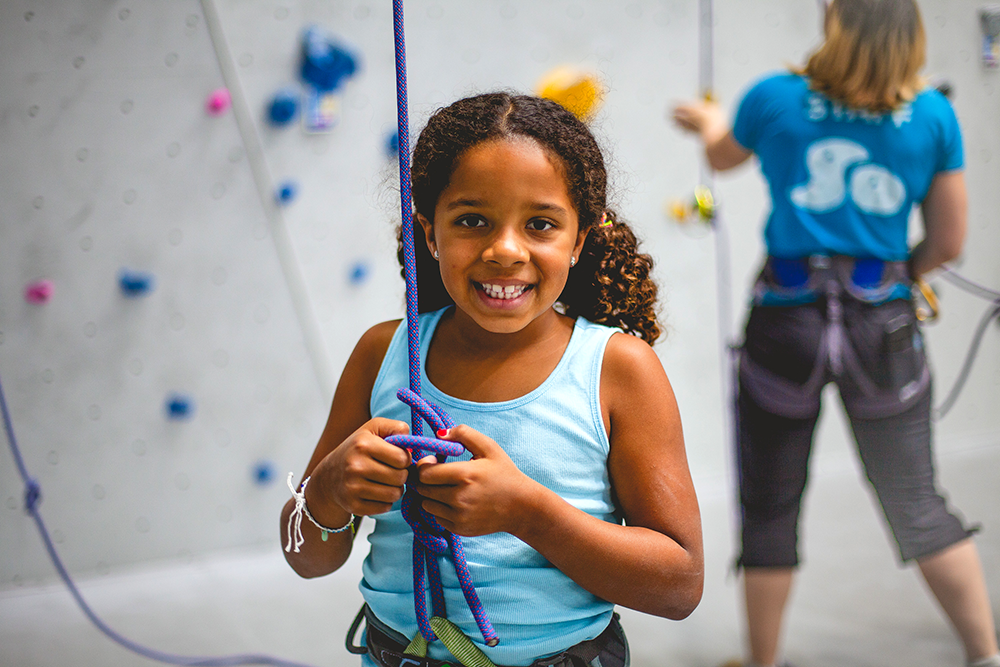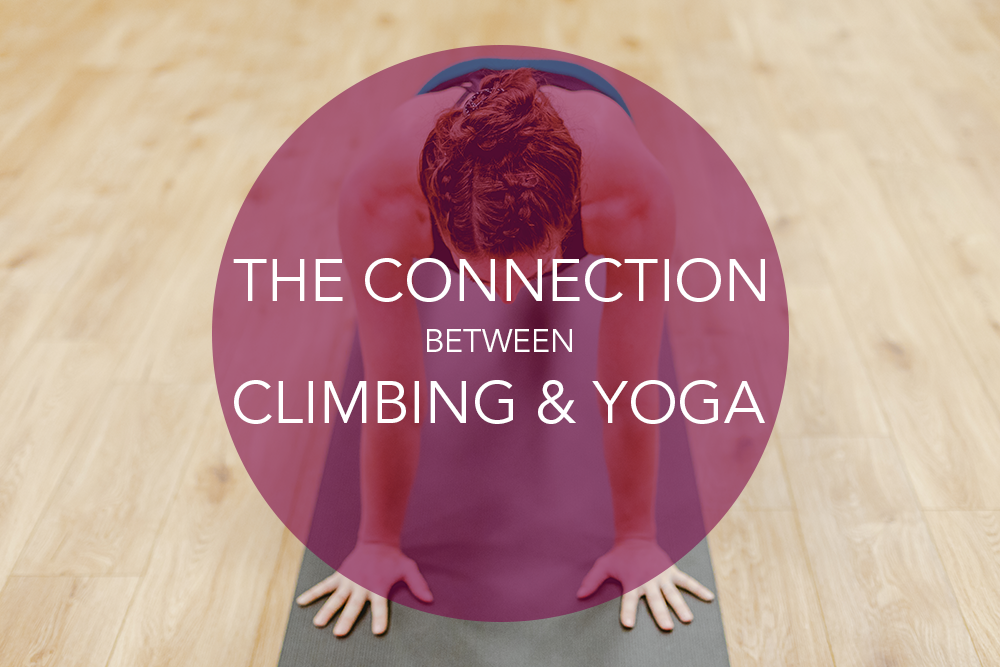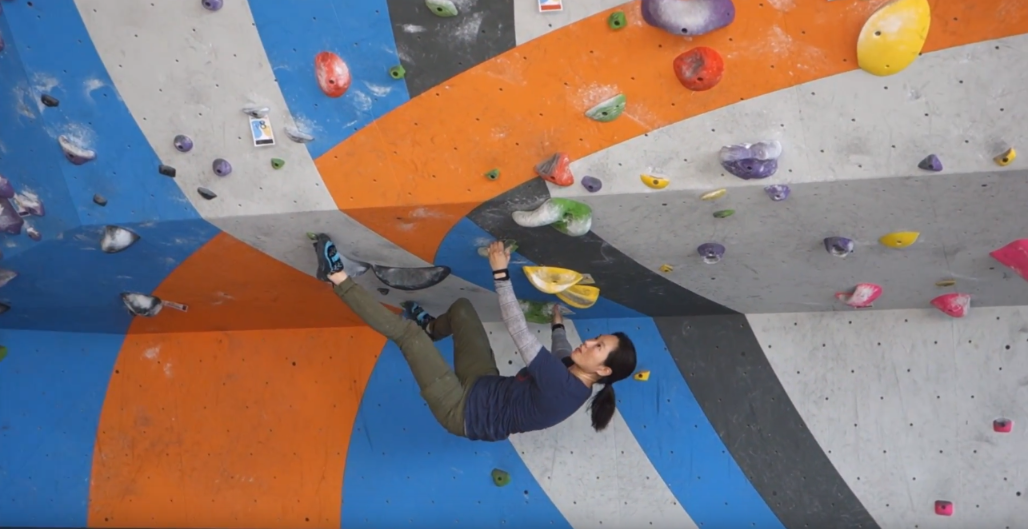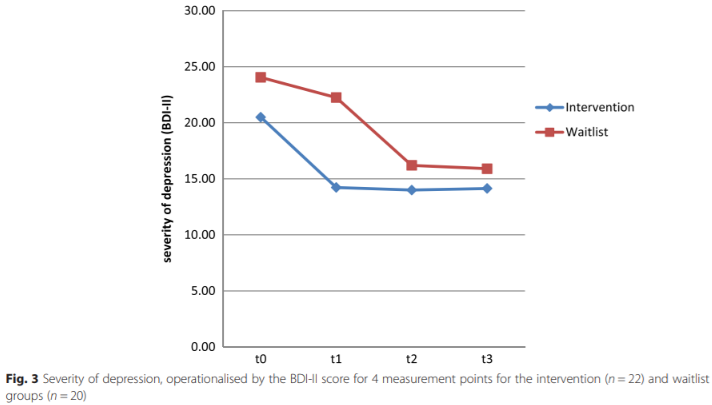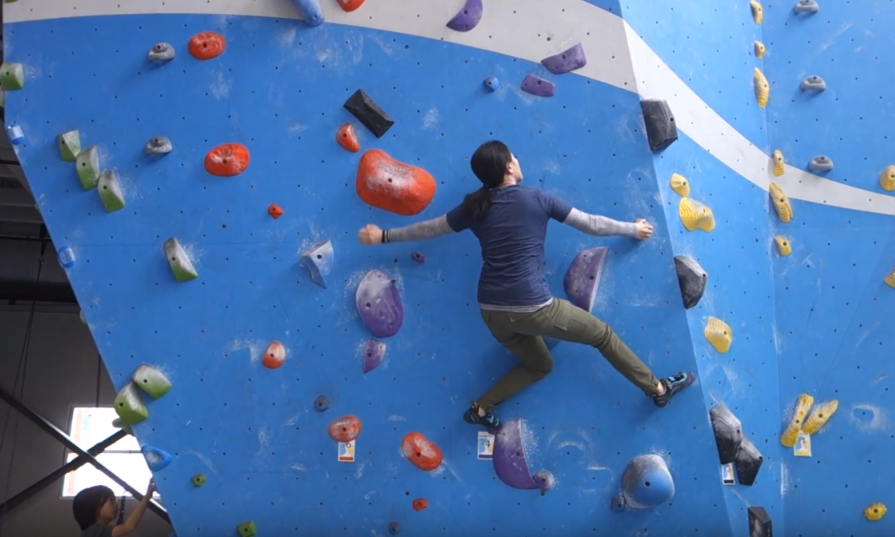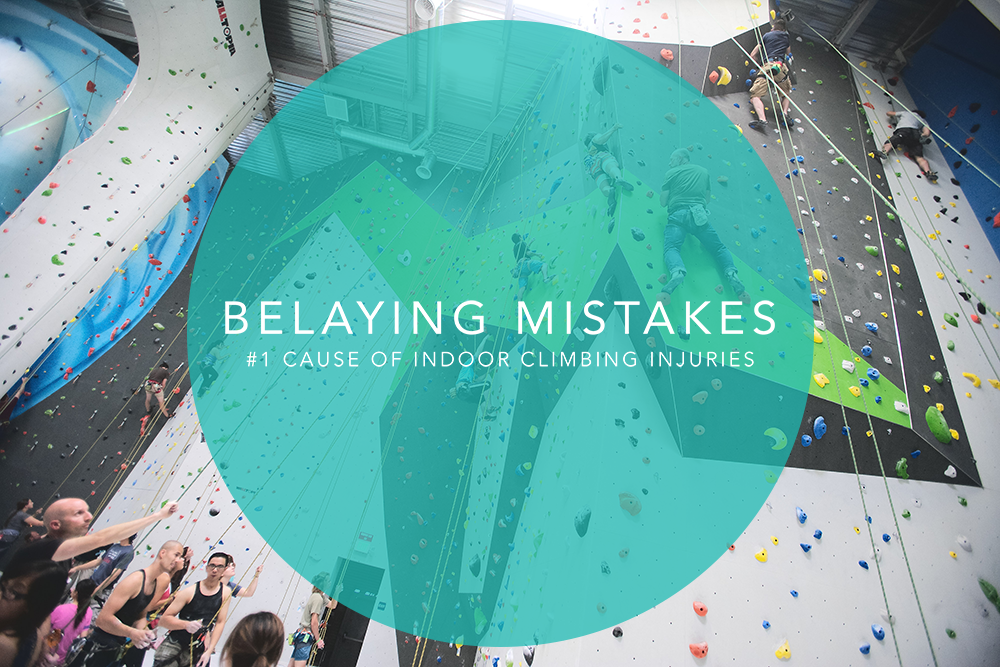
Belaying Mistakes | #1 Cause of Indoor Climbing Injuries
the contentWords by Jane Chin, Ph.D.
Website: http://janechin.com/
Rock climbing is becoming more popular, and with this, is an increasing interest in trends and patterns of climbing injuries and accidents. Physician researchers from a German university decided to investigate common causes of climbing accidents and injuries in an indoor climbing gym setting. They analyzed over 500 thousand visits to a major city climbing gym during a 5 year period (2007-2011). This represented the first study to accurately track time spent indoor climbing and the types of acute injuries in a large number of climbers.
The average climbing time was almost 3 hours each session and climbers were about 2/3 male and 1/3 female. Median age was 34 years (actual logged ages ranged from 8 to 80 years old). Within the 5 year survey period, 30 climbing injuries were recorded: Acute injuries happened in 6 cases of bouldering, 16 cases of lead climbing, 7 cases of top roping, and 1 case of watching (spectating; not climbing or belaying). Injuries were rated on a severity spectrum from 0 to 6 (immediate death) -- see Table 2. In this 5 year analysis of indoor rock climbing, there were no fatalities.
Table 2 from Schöffl 2013 (sourced below)
Once Weekly Climbers Experienced Highest Injury Rates
We may assume that climbing "accidents" should occur more often in beginners, but researchers found that about 17% of the accidents occurred with beginners (experience of <20 climbing days) while 53% climbing accidents were with climbers with "intermediate experience", climbing about once a week. The "serious" climbers, logging 2-3 climbing days each week, experienced 20% of the injuries, and climbing "professionals" who teach belay and climbing skills had 10% -- see Table 3.
Table 3 from Schöffl 2013 (sourced below)
Lead Belaying Mistakes Account for Climbing Accidents
Most of the injuries in lead and top-rope climbing were due to belaying mistakes at 10 cases out of 23 lead/top rope climbing accidents logged. Bouldering injuries were primarily due to falls on the mat. The researchers were surprised at the incidence of injuries from top-rope climbing, as top-rope was assumed "safer" than lead climbing or bouldering. Yet top-rope climbing mistakes manifested across the experience spectrum from beginners through professional experienced climbers.
Thus partner checks in any type of rope climbing should be mandatory, where both the belayer and climber check to make sure that:
- Harness fasteners are double backed.
- All knots are correctly tied and through the proper hard point of the harness.
- Carabiner is on the proper hard point of the harness, is locked, and the belay device is properly loaded.
- The free end of the rope is secured by the brake hand of the belayer.
The most serious top-rope accident in the study occurred when a climber followed a climb on top rope that had been led by their partner. In these situations, since the leader has clipped the rope into the wall as they completed the initial climb, the follower must un-clip the rope as they go up the wall. With this particular case, the leader neglected to clip the rope into the final anchor at the top of the climb, and was instead lowered from the last clip on the wall. When the second climber cleaned the lead (un-clipped the rope while they climbed), the climber un-clipped every draw, including the final clip, meaning that when the climber weighted the rope to be lowered, he was no longer attached to the wall, resulting in a free fall to the ground. Accidents such as these are rare, but they do happen, and are completely preventable. In this particular case, there was a separate top rope affixed to the top of the same climb, therefore the partners should have checked to be sure the second climber was top roping on the properly secured rope, and should have pulled the unsecured rope before the climber started up the wall.
These checks can sometimes feel so straightforward that even climbers of all experience levels can become complacent, and neglect to double check even the most “obvious” things, which can result in dangerous situations.
Jane Chin lead climbing at Sender One LAX (Image by Cass Chin)
"Climbing is a dangerous sport"
Climbing is a Dangerous Sport! - We climbers hear this and see this posted at climbing gyms, but this isn't just a sound bite. The risks are real! Climbers understand that climbing is dangerous, and the most experienced climbers develop a healthy respect for all aspects of climbing safety.
As a matter of fact, we may assume that serious belaying mistakes occur with new or inexperienced climbers, when social science research shows that human error occurs not primarily due to incompetence, but actually due to experience resulting in over-confidence. In other words, experienced climbers screw up because they were so confident in what they were doing that they overlooked the need to go over basics.
My husband and I each have had this experience both as belayer and climber. For example, I have forgotten to screw tight the gri-gri locking mechanism before belaying my husband; even with the gri-gri's safety features, not tightening that screw could have consequences if he took a big lead climbing fall. Another example is in his haste to start climbing, my husband has threaded the rope through only one rather than both hard points of his climbing harness, which could have scary consequences if he took a big fall. In addition, one of our very experienced climbing friends had climbed up an auto-belay rope course at another climbing gym, only to realize as he pushed off the top that he had forgotten to attach himself to the auto-belay. Fortunately for him, he broke only his wrist, but this scenario could have had a much worse ending. And if you think that accidental free-climbing is one of those rare, "freak" accidents, there is at least one more personal account of an experienced climber forgetting to clip his harness into the auto-belay. In this case, the climber was wondering why a child climbing next to him kept making ominous remarks ("you're going to die" - spooky right?) until he was 45 feet up in the air and ready to make a crux move that he didn't always clear. That was when he realized he had been free-climbing up the wall with no safety equipment. He slowly and shakily made his descent to safety and was grateful for this child's warning.
Be Prepared
No matter where you land on the experience spectrum, every climber is at risk of accidentally harming themselves, or their partner. Those risks, however, can be navigated through improving our skills and knowledge as climbers. Sender One Climbing offers instruction on Top Rope Climbing, Lead Climbing, and Advanced Lead Climbing, as well as several classes on technique and physical training. Each of these courses will teach you proper belaying and climbing techniques that will assist in mitigating risk while on the wall or at the crag. You can learn more about Sender One Climbing’s Instruction in Los Angeles here, or in Santa Ana, here. Remember, you can never learn too much, nor can you be too cautious when it comes to navigating the risks of climbing.
Sources
Acute Injury Risk and Severity in Indoor Climbing -- A Prospective Analysis of 515,337 Indoor Climbing Wall Visits in 5 Years." Schoffl, VR et al. Wilderness & Environmental Medicine, 24, 187-194 (2013). -- https://www.ncbi.nlm.nih.gov/pubmed/23877045
HIDDEN BRAIN, You 2.0: Check Yourself. August 27, 20189:00 PM ET -- https://www.npr.org/templates/transcript/transcript.php?storyId=642310810
"What's the creepiest thing you have heard a child say?" - Dave Kaufman - https://www.quora.com/Whats-the-creepiest-thing-you-have-heard-a-child-say/answer/Dave-Kaufman




